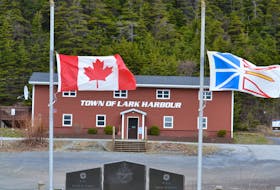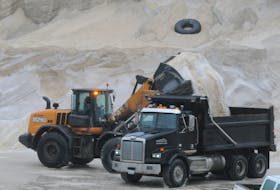The two groups representing inshore fish harvesters in the province are both raising concerns after science on northern shrimp was provided in a technical briefing by the Department of Fisheries and Oceans (DFO) on Friday, Feb. 16.
According to a news release from the Federation of Independent Sea Harvesters of Newfoundland and Labrador (FISH-NL), scientists indicated the stock in Shrimp Fishing Area (SFA) 6, located off Newfoundland’s northeast coast and southern Labrador, is still in the critical zone.
FISH-NL called on the federal government to reserve the limited quota for the inshore fleet only and wants fishing when shrimp are spawning banned completely.
The organization is also asking Ottawa to assign a quota of northern shrimp to the inshore fleet further north off Labrador in SFA 5.
“Priority must be given to the inshore harvesters of Newfoundland and Labrador — the economic pillars of our rural communities who are adjacent to the northern shrimp resource,” FISH-NL president Ryan Cleary said.
“Inshore harvesters have been absolutely devastated by cuts to shrimp quotas, and yet another cut will push many over the financial edge. It’s clear there’s only room for the inshore fleet in that area.”
According to the FISH-NL release, scientists say the fishable biomass in SFA 6 dropped by 16 per cent and the spawning biomass decreased by 19 per cent between 2016-2017.
Another cut in quota is expected this year after it was reduced to 10,400 tonnes from 27,825 tonnes last year.
RELATED
Key northern shrimp stock off N.L. down again
The scientific information will be presented March 7 to the Northern Shrimp Advisory meeting, FISH-NL says.
Just under 70 per cent of the shrimp quota in SFA 6 is reserved for the inshore fleet, and 23.1 per cent for the offshore, according to FISH-NL. The remainder goes to St. Anthony Basin Resources Inc. (4.5 per cent), the Innu Nation (1.7 per cent), and Fogo Island Co-op (1.1 per cent).
“Factory-freezer trawlers fish shrimp in Area 6 in the winter, with the inshore fleet fishing in the summer so that the northern shrimp stock never gets a break. It’s clear the offshore must go, with priority given to the inshore,” Cleary said.
According to FISH-NL, scientists report shrimp stocks in SFAs 4 and 5 further north off Labrador remain in the healthy zone, noting as well that shrimp larva mostly drift north to south with strong currents, meaning fishing in those areas could have an impact on the growth of the stock in area 6.
Re-evaluate reference points: FFAW-Unifor
In a separate release, the Fish, Food and Allied Workers (FFAW-Unifor) union raised a different concern, calling on the DFO to re-evaluate the reference points used to establish the stock status of northern shrimp in SFA 6.
FFAW-Unifor says DFO sets reference points based on the average spawning stock biomass from 1996 to 2003. At that time, shrimp predators such as northern cod were at an all-time low.
The union says a rebuilding plan based on that reference period means northern shrimp will probably not recover out of the critical zone, whether there is any fishing pressure or not.
FFAW-Unifor says DFO officials indicated shrimp levels are currently similar to the 1980s and 1990s, before the groundfish collapse.
“This northern shrimp assessment paints a picture of an ecosystem in transition, not simply the decline of a stock,” said FFAW-Unifor president Keith Sullivan.
“It is crucial that DFO incorporate pre-1996 biomass levels in the management of northern shrimp. Re-evaluating the reference points would help to stabilize this fishery and avoid further economic hardship in rural Newfoundland and Labrador.”
FFAW-Unifor, meanwhile, also called for the offshore fleet’s removal from SFA 6.
“Unless the department re-considers their approach, given the current status of the stock, harvesters will expect to see another cut to shrimp quotas again this year. A well-managed transition from shellfish to groundfish is critical to the economic wellbeing of our coastal communities,” Sullivan said.









